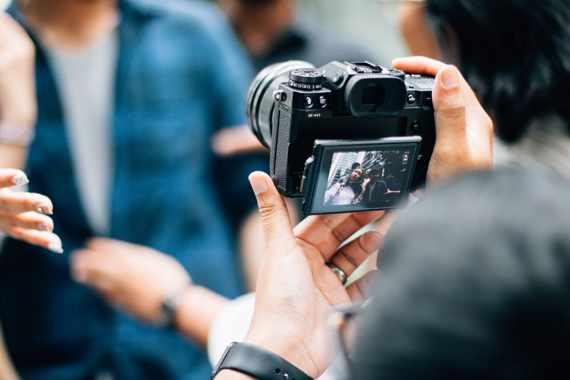Effective photographers…

photo by Christopher Michel
- Don’t expect their camera to do all the work. This means saying goodbye to ‘Auto’ and bravely using other modes such as Aperture Priority or Manual.
- Read the camera manual—several times—to get familiar with their gear.
- Gradually work through various functions and features on their camera.
- Take control of their camera, and the lighting conditions they are faced with.
- Understand that pressing the shutter is only half of making a good photograph. Modern cameras are no match for the human eye, and still have lots of limitations, especially in low light situations. Post-processing has been done since the invention of photography (either in a traditional darkroom or on a computer). This is where you polish your final images, and make adjustments to compensate for the constraints of the camera.

Photo by Luke Lung; ISO 200, f/1.4, 1/400s, 50mm.
- Select and present only the very best images from a photo shoot.
- Store a back-up copy of their images onto an external hard drive, or somewhere safe.
- Publish photographs, so they aren’t destined to die on a dusty hard drive, unseen by the world.
- Share their work to get constructive feedback from peers (via online galleries such as 500px, Flickr, Google Photos, Instagram or a Facebook group).
- Present their images as a means of self-expression—their contribution to recording the world, from their point of view (e.g. framed photos, greeting cards, calendars, art galleries, photo books, or merely as prints inside a simple photo album).
- Get inspiration from other photographers they admire. Read eBooks, magazines, blog posts, look at Facebook posts, or view YouTube videos. Visit galleries, take workshops or go on a photography tour to learn from a more experienced shooter.

photo by Elvert Barnes
- Travel in search of fresh subject matter; this could be interesting locations or photogenic people. On a micro level, they use their feet to find fresh angles and perspectives – they ‘work the scene’, and don’t just settle on the first composition they see. On a macro level, they visit exotic or remote locations away from home, opening their eyes to new possibilities.
- Avoid shooting clichés, looking for a new take on well-photographed subjects.

photo by b k
In summary, you can be a more effective photographer by educating yourself, embracing challenges, and becoming proactive.
Thomas Edison once said that “genius is one percent inspiration, and 99 percent perspiration.” The one thing that will greatly improve your photography is practice… lots of practice. Go for it!
About the Author:
Ray Salisbury is a seasoned landscape photographer and art teacher based in Nelson. He sells his photos to magazines, calendars, and image libraries. This article is part of a 28-page eBook Jumpstart Your Photography, designed to educate & inspire beginning photographers.
Like This Article?
Don't Miss The Next One!
Join over 100,000 photographers of all experience levels who receive our free photography tips and articles to stay current:






Leave a Reply